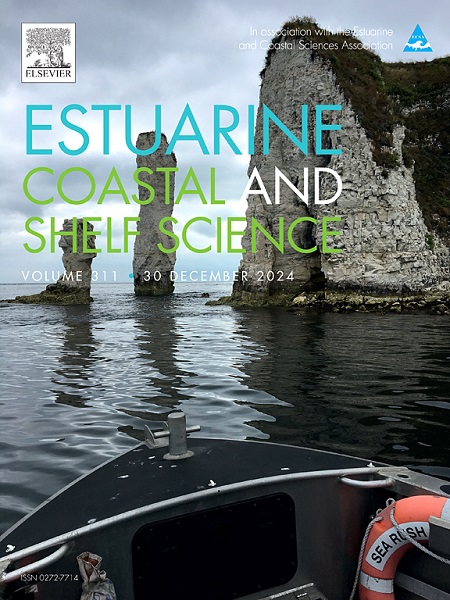Phylogeography of the kelp-dwelling isopod Amphoroidea typa H. Milne Edwards (1840) along the coast of continental Chile
IF 2.6
3区 地球科学
Q1 MARINE & FRESHWATER BIOLOGY
引用次数: 0
Abstract
Isopods, characterized by direct development, lack a planktonic stage that would allow for long-distance dispersal. For some herbivorous species, though, rafting on floating macrophytes (including seaweeds) could be a mechanism to facilitate population connectivity over wide distances. In addition, the phylogeography of these species is expected to be related to that of their dispersal vectors. In the current study, we sequenced a fragment of 636 bp of the COxI gene in 107 individuals of the kelp-dwelling isopod Amphoroidea typa from ten populations along 2500 km of the Chilean coast (27°S – 43°S); no isopods were found at two sites in northern Chile (21°S and 23°S). Our results reveal the existence of population genetic structure and isolation by distance in A. typa. We identified three geographic groups: one represented by the four northernmost populations (27°-32°S), a second one including two central populations (34°-37°S), and the last one comprising the southernmost populations (39°-43°S). These results are partially explained by the effect of El Niño, which enhances extinction and recolonization of kelp forests and associated grazers north of 30°S. The results show that A. typa does not have any specific kelp preferences and dwells on kelp species with different dispersal capabilities, such as the non-buoyant Lessonia spp. and the floating giant kelp Macrocystis pyrifera. Individuals of A. typa appear capable of switching between different kelp hosts during their lifetime, including vectors that permit rafting over long distances, and thereby contribute to population connectivity throughout the distribution range of this herbivorous isopod. The main outcomes of the current study support the idea that organisms dwelling on positively buoyant macrophytes can effectively disperse together with their floating hosts.

求助全文
约1分钟内获得全文
求助全文
来源期刊
CiteScore
5.60
自引率
7.10%
发文量
374
审稿时长
9 months
期刊介绍:
Estuarine, Coastal and Shelf Science is an international multidisciplinary journal devoted to the analysis of saline water phenomena ranging from the outer edge of the continental shelf to the upper limits of the tidal zone. The journal provides a unique forum, unifying the multidisciplinary approaches to the study of the oceanography of estuaries, coastal zones, and continental shelf seas. It features original research papers, review papers and short communications treating such disciplines as zoology, botany, geology, sedimentology, physical oceanography.

 求助内容:
求助内容: 应助结果提醒方式:
应助结果提醒方式:


